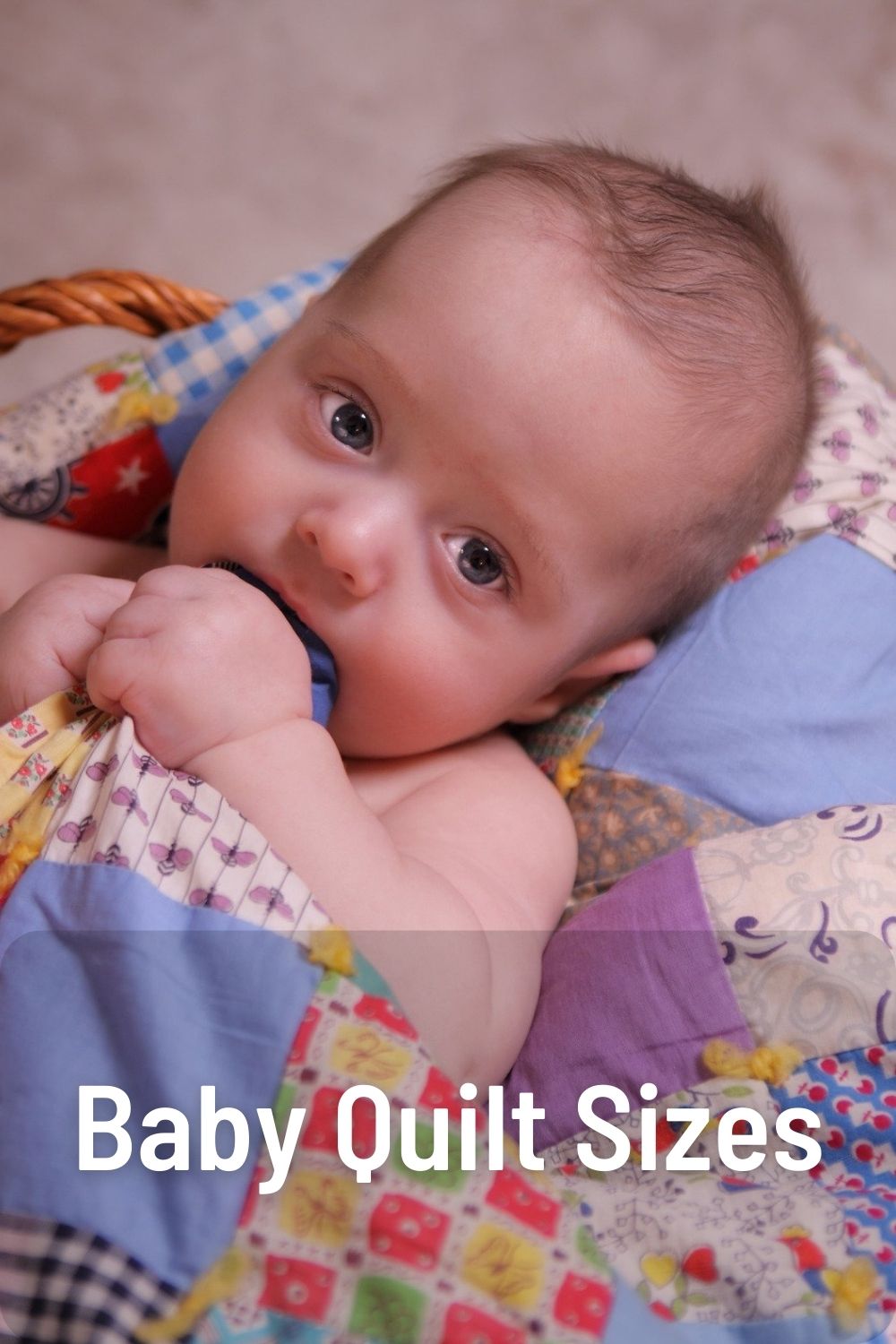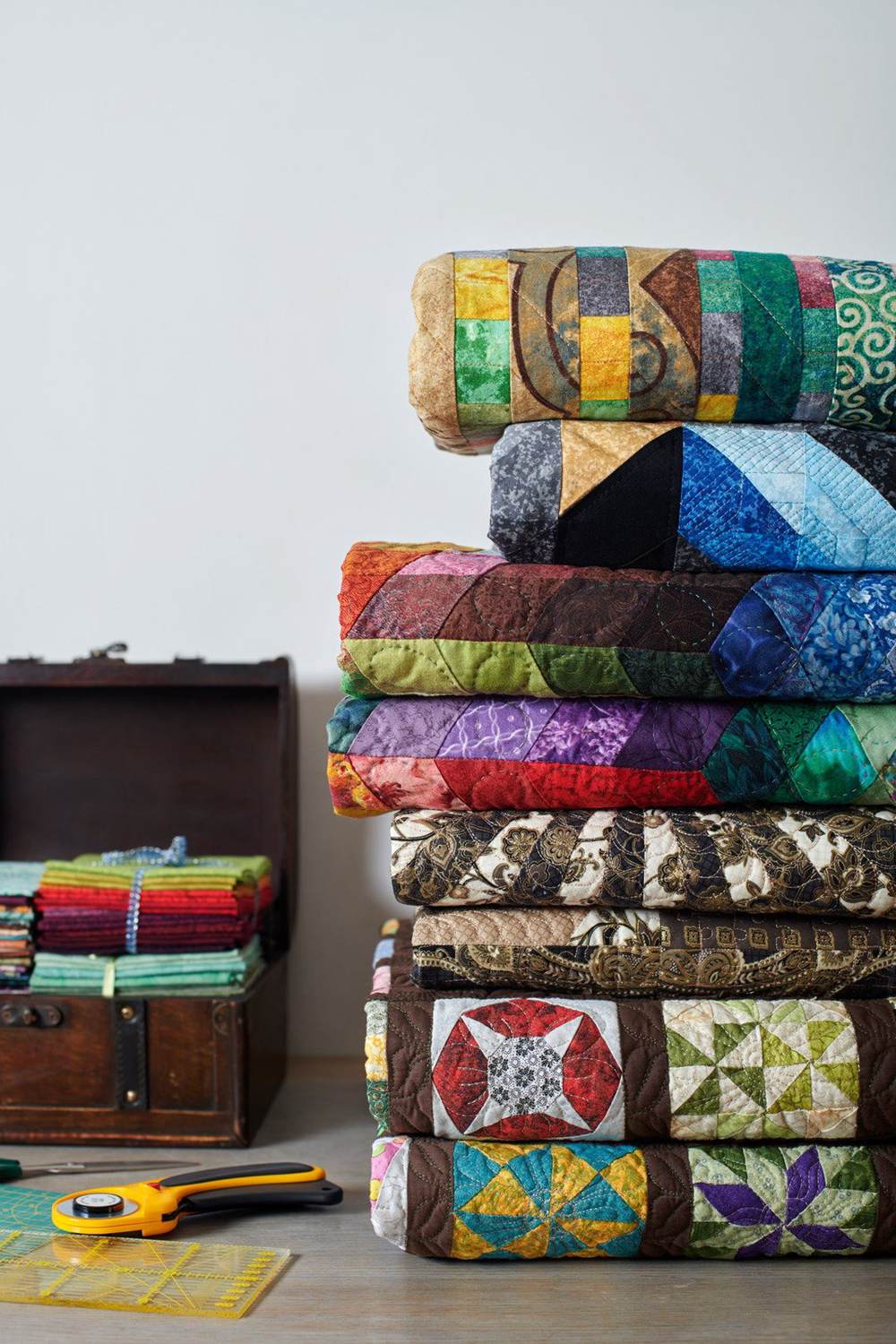
Quilts make wonderful gifts for new babies. A handmade quilt is a cherished keepsake that can be passed down for generations. When making a baby quilt, it’s important to choose the right size so that it’s useful as the baby grows. This complete guide covers standard baby quilt sizes from newborn through toddler years.
Table of Contents
Standard Baby Quilt Sizes
There are four common baby quilt sizes to choose from:
Newborn Baby Quilts
A newborn baby quilt is the smallest size, ideal for newborns 0-3 months. Focus on simple designs that are quick to make.
Typical finished size:
- 30″ x 30″
- 32” x 32”
- 36” x 36”
Crib Quilts
Once baby outgrows a newborn quilt, a crib quilt is perfect for naps and everyday use. Make it around 36” for safety.
Typical finished size:
- 36” x 45”
- 36” x 36”
Lap Quilts
A lap quilt is larger than a crib quilt. It’s nice for playtime, or to wrap baby up on your lap.
Typical finished size:
- 45” x 45”
- 45” x 60”
Toddler Quilts
As toddlers transition to a big kid bed, a larger quilt is cozy for sleeping. Focus on durability with kid-friendly fabrics.
Typical finished size:
- 45” x 60”
- 50” x 65”
Factors That Determine Quilt Size
Several things impact what size to make a baby quilt. Consider the following:
Baby’s Age
Choose a newborn or crib size for babies under 1. Go with a lap or toddler quilt for 1-3 years.
Location of Use
Smaller for strollers, swings, and cribs. Bigger for floors, beds, and playgrounds.
Purpose
A stroller quilt can be smaller than a bed quilt. A play mat quilt benefits from extra wiggle room.
Washing/Durability
Prioritize sturdy, washable fabrics and constructions for hard-wearing kid quilts.
Parent Preferences
Ask the parents if they have a certain size in mind. They may want extra room to grow.
Baby Quilt Size Charts
These charts summarize recommended sizes for baby quilts:
By Baby’s Age
| Age | Quilt Size |
|---|---|
| Newborn | 30″ x 30″<br>32″ x 32″<br>36″ x 36″ |
| 0-12 months | 36″ x 36″<br>36″ x 45″ |
| 1-3 years | 45″ x 45″<br>45″ x 60″ |
| Toddler | 45″ x 60″<br>50″ x 65″ |
By Quilt Type
| Quilt Type | Size |
|---|---|
| Newborn | 30″ x 30″ to 36″ x 36″ |
| Crib | 36″ x 36″ or 36″ x 45″ |
| Lap | 45″ x 45″ to 45″ x 60″ |
| Toddler | 45″ x 60″ to 50″ x 65″ |
Planning and Making Your Baby Quilt
Making the perfect baby quilt takes a bit of planning. Follow these tips for success:
Choose baby-safe materials – Organic fabrics, low VOC inks, and polyester batting are gentle for sensitive skin.
Pick a simple pattern – Focus on essential quilting skills like squares, rectangles, and straight lines. You can get creative with colors and fabrics.
Wash fabrics before sewing – Pre-washing prevents later shrinking and keeps quilts soft.
Check the dimensions – Measure as you go to ensure the top, batting, and backing are the right sizes.
Use a walking foot – This presser foot prevents fabric slipping when quilting layers together.
knot the ends – secure the quilt ties and trim any loose threads.
Wash gently, dry flat – Machine wash in cold water, no bleach. Tumble dry low.
Caring for Baby Quilts
Babies can be hard on quilts with spills, messes, and accidents. Here are tips for keeping baby quilts looking their best:
- Use a vinyl-backed quilt or quilt protector to protect the quilt top.
- Spot clean stains right away with a damp cloth and mild detergent.
- Machine wash in cold water, delicate cycle. Use a mild detergent.
- Always air dry or dry on low heat to prevent shrinking.
- Repair any tears, holes or pulled stitches immediately.
- Consider having heirloom quilts professionally cleaned if heavily soiled.
Baby Quilt Patterns

When choosing a pattern for a baby quilt, opt for simple designs that quilt up quickly. Here are some easy ideas:
- Solid or patchwork squares
- Rail fence or zigzag patterns
- Pinwheels or snowballs
- Strips or checkerboards
- Applique shapes like animals or hearts -Repeating geometric patterns like stars or triangles
- Solid fabric with patterned binding
Focus on soft fabrics and colors for the nursery like cute florals, pastels, or gender neutral patterns. Add in whimsical applique shapes or embroidered details for an extra special touch.
Baby Quilt Fabric Selection
Choosing the right fabrics is an important part of making a baby quilt. Consider the following:
Fiber content – Choose 100% cottons or cotton blends. Stay away from scratchy synthetics.
** Fabric quality** – Quilting cottons or flannels are ideal for durability and softness.
Safety – Ensure dyes/prints are non-toxic for baby. Organic is ideal.
Feel – Soft, flexible fabrics are best for sensitive skin. Wash/dry fabrics before sewing.
Ease of care – Minimum 3% shrinkage. Wrinkle and stain resistant.
Color/Design – Have fun with colors and patterns to make it lively and playful.
Top choices include:
- Quilting cottons
- Flannel
- Organic fabrics
- Cotton knits or wovens
- Double gauze
Avoid polyester blends, scratchy synthetics, and overly stiff fabrics.
Making Your Quilt Last
With loving use and care, a baby quilt can become a cherished heirloom. Here’s how to make it last for generations:
- Use quality materials – Invest in 100% cotton, colorfast fabrics and threads.
- Reinforce stress points – Use reinforcing stitches around binding and corners.
- Prewash and presoak – This avoids later shrinking and fading.
- Tie knots securely – Double knot quilt ties and weave in other threads.
- Bind edges neatly – Binding encases edges for a tidy finish.
- Quilt densely – Closer quilting keeps batting from bunching.
- Store flat, not folded – This prevents creases and damage over time.
- Clean gently – Spot clean stains quickly. Machine wash infrequently on delicate cycle. Air dry only.
- Repair damage promptly – Don’t let rips or holes worsen over time.
- Use a quilt protector – A cover prevents soiling and wear.
With proper care and maintenance, your baby quilt can become a beloved heirloom to pass down.
Frequently Asked Questions
What size baby quilt should I make?
Choose the quilt size based on the baby’s age. A good guideline is 30-36” for newborns, 36-45” for babies under 1 year old, 45-60” for 1-3 years old, and 50-65” for toddlers. Consider the purpose and location too – a stroller quilt can be smaller than a bed quilt.
What is the best fabric for baby quilts?
100% cotton or cotton blends are ideal for softness and safety. Look for quilting cottons, flannels, organic fabrics, or cotton wovens/knits. Make sure dyes and prints are non-toxic. Wash fabrics before use.
How do I make a baby quilt durable?
Use quality 100% cottons, reinforce seams and stress points, tightly tie knots, bind edges neatly, quilt densely, and pre-wash/dry fabrics. Gently machine wash on delicate when needed, but avoid excessive cleaning. Air dry only. Repair any damage right away.
What kind of batting should I use?
Choose a 100% polyester batting or organic cotton batting. Polyester provides loft and softness. Organic cotton is safer for babies but less full. You want light to mid-weight batting. Heavier might be too warm.
Is it safe to embroider a baby’s name on a quilt?
It’s best to wait until after the baby is born to personalize a quilt. Instead of names, you can embroider general designs, dates, or baby motifs. If personalizing, use cotton threads and make sure all knots are secure. Avoid loose ribbons, buttons, or appliques that could come off.